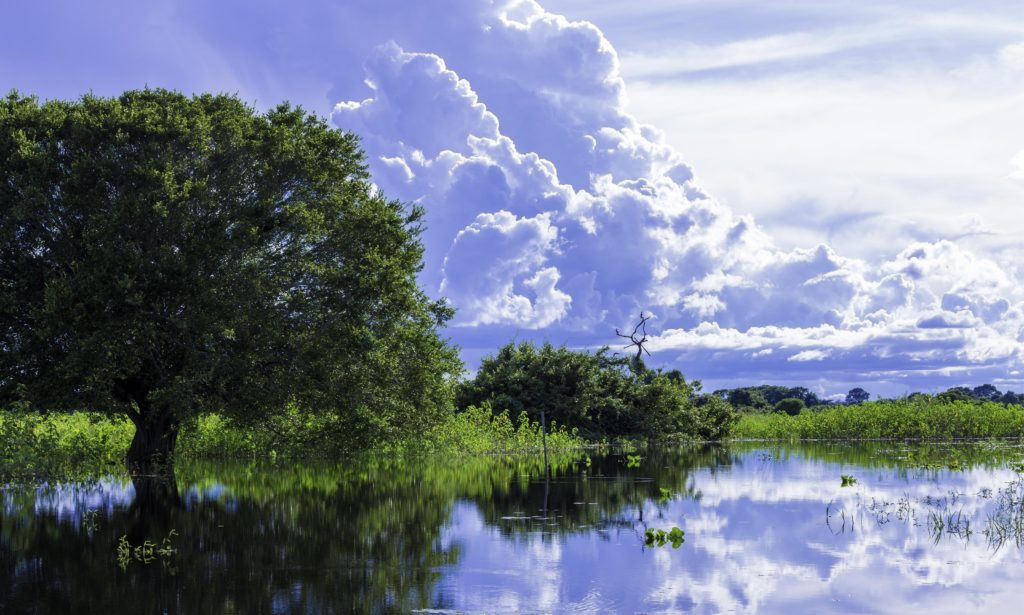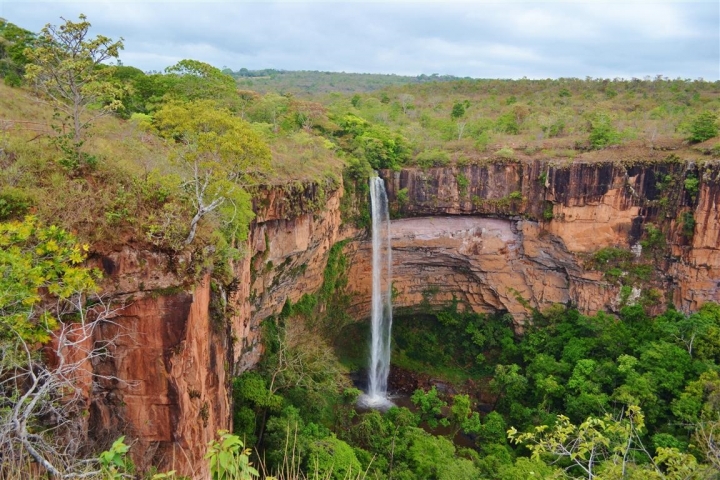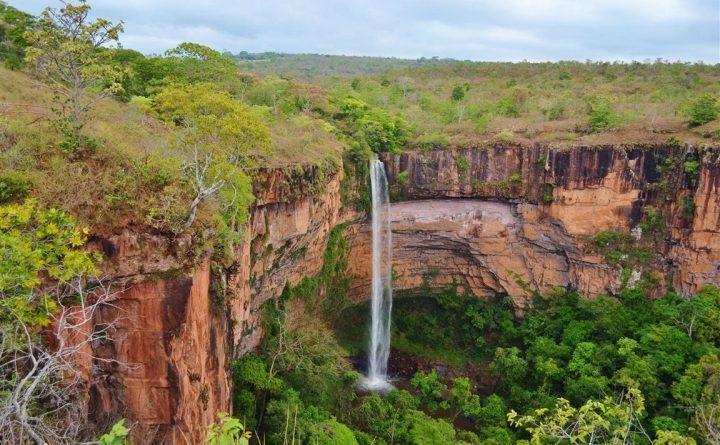The Mato Grosso
This vast swathe of land that ranges from the thick jungle-covered reaches of the Amazonian basin in the north to the endless sea of Pantanal swamp pools in the south, is the third largest political region in all of Brazil, and one of the country’s veritable hubs of natural beauty. It’s here that the formidable arrays of bird and mammal life flock to revel in the rich and fertile waters of the Amazon flood plains each year, and where the wild rivers that find their source high in the Peruvian Andes run eagerly over the dramatic, square-cut chapada plateaus of western Brazil.

Today, the region pulls crowds of visitors, scientists and conservationists each year; all lured in by the offer of South America’s majestic biodiversity in the extreme. But, while the Mato Grosso remains virtually unrivalled in its offering of ecology in this landlocked corner of the country, the rise of tourism here has not been without its problems. Infrastructure and road systems remain somewhat archaic, while the smattering of small towns and reservation settlements has done well to stifle the onslaught of mass tourism.
That said, in the region’s major cities and towns it is now possible to organise travel tours right across the Mato Grosso, from the caves of the Chapada dos Guimaraes to the Pantanal flood plains of the Mato Grosso do Sul. There’s also been sufficient metropolitan growth in the last few decades for visitors to enjoy a kaleidoscope of different urban pursuits, from the lively cantinas and bars of Cuiaba, to the sprawling industrial sights of Camp Grande, where soya bean production is now the highest in all of Brazil.
The state capital at Cuiaba is hailed as the very heart of South America as a whole, located as it is smack bang midway between the eastern Brazilian coast and the western Peruvian seaboard. It’s a city that has risen from obscurity only in the last century, swelling and growing under the strains and pressures of a major late-19th century gold rush that brought swathes of hopeful pioneers to the chapada mines of the Mato Grosso.
Today, Cuiaba is home to a number of curious regional museums dedicated to the preservation and chronicling of Mato Grosso’s own unique cultural character. What’s more, as one of the 2014 world cup host cities, the centre is set to explode with festival events and heritage attractions to boot, all related to the larger province and it’s important role in the cultural fabric of Brazil as a whole.

Away from the cityscapes of Mato Grosso though, the undisputed natural draw in the north part of the region is the dramatic landscape of the Chapada dos Guimaraes National Park. Here, more than 80,000 acres of land is occupied by a plethora of waterfalls and deep caves that linger dramatically over the western edge of the Brazilian plateau. Hikers and mountain bikers will be right at home in the rugged environment, and should be sure not to miss the astounding Cidade de Pedra, where dramatic cliffs converge to form a backbone of massif peaks across the horizon.
In the south, it’s the Pantanal that represents the biggest ecotourist pull, while wildlife spotters and nature enthusiasts have been coming here for years to enjoy the most lush and animal-rich surroundings perhaps in all of South America. For one thing it’s estimated that more than 3,000 individual plant species flower and wither with the seasons in this wet corner of the country, while just under 1,000 individual bird species pass through from month to month.
Visitors looking to get deep into the heart of the Pantanal of Mato Grosso should consider taking a flyover tour of the region. Currently there is only one viable road that crosses the flood plain (the Transpantaneira), while 4-wheel-drive excursions are limited in their scope by both the seasons and the infrastructure. What’s more, staying in the Pantanal can be difficult due to the general scarcity of settlements and touristic amenities, so most visitors choose to stay out of the immediate vicinity of the wetlands, usually in the small city of Corumba.

Other visitors chose to enter via the sprawling city of Campo Grande, which is the capital of the smaller province of Mato Grosso do Sul, situated to the south of Mato Groso proper. For many it’s a better choice on account of Campo Grando’s cosmopolitan character and lively cultural scene, not to mention the ease of access made possible by the international airport, where guests enjoy links to Bolivia, Paraguay and elsewhere in Brazil itself.

